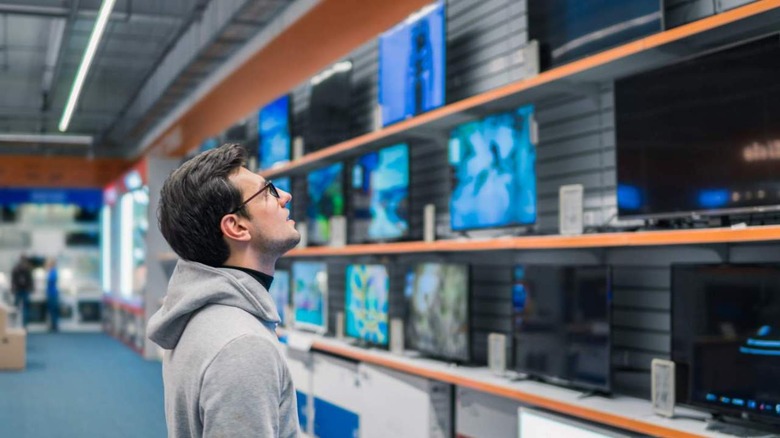What Is HDMI 2.1a And How Is It Different From HDMI 2.1?
Technology is always evolving and that includes the tech we use to connect our streaming players to our televisions. HDMI has become a staple in homes that play video games or watch TV. As this tech evolves, though, it has become more and more confusing. In fact, the most recent update to HDMI 2.1a has created even more confusion. What exactly is HDMI 2.1a and how is it different from the previously released HDMI 2.1?
Well, for starters, HDMI 2.1a is essentially an incremental update for HDMI 2.1. As such, it builds off the same tech that is used for HDMI 2.1. That means you aren't going to see a huge fundamental change in HDMI with the release of 2.1a. Where HDMI 2.1 introduced support for eARC and uncompressed 8K signal, HDMI 2.1a brings one new feature called Source-Based Tone Mapping (via HDMI.org). This feature is a key update for HDR, though, so it could end up playing a larger part in future HDMI updates.
What is source-based tone mapping?
As mentioned above, Source-Based Tone Mapping (SBTM) is the only big change with HDMI 2.1a. But, it's an important change for people using displays that support HDR (which stands for high dynamic range). HDR is essentially used to deliver more realistic tones in darks and whites by increasing the spectrum that the display shows for those particular color types.
HDR has become a pretty popular tech in televisions sets and gaming consoles in recent years. But, not all displays out there have the same HDR capabilities. Some displays have different ranges of brightness levels and color than others. This is normally okay, especially when using tech like HDR10 or HLG. However, sometimes a device may need to show different types of content (like HDR, dynamic HDR, or SDR) on the screen at the same time. This can cause issues with optimization as your display can't process all of the signals at the same time.
Because so many displays offer different levels of brightness and ranges of color, HDR needs to be manually adjusted to fit correctly. With SBTM, though, the device could send a signal that takes full advantage of the display's capabilities without you needing to do anything. Essentially, this would let the signal adapt to your display's capabilities, instead of requiring you to simply deal with a set range of colors and brightness.
At its core, SBTM isn't a replacement for any of the previous HDR systems we've seen put in place. Instead, it's meant to optimize the process.
Do you need to buy new devices for HDMI 2.1a?
This is really where things get tricky. When HDMI 2.1 was released, it heralded the need to purchase new televisions, monitors, and even source devices to take advantage of the new tech. However, because HDMI 2.1a isn't a complete overhaul, there's a lot of room for the update to be released as a software change instead of a hardware change.
According to the HDMI website, SBTM and HDMI 2.1a will support several types of devices, including set-top boxes like cable or satellite, as well as video game consoles and PCs. Additionally, many of those devices will get firmware upgrades to add support for SBTM. Of course, the site notes that this depends on the design of the devices, too, so the answer isn't exactly clear-cut.
Ultimately, HDMI 2.1a will be a nice update for users who like HDR and utilize it daily. If you haven't yet updated to an HDR-enabled display, or if you just don't care about HDR tech in general, then this update isn't going to be that big of a deal and you shouldn't worry about upgrading for it just yet. We haven't seen a wide release of HDMI 2.1a just yet, so it's possible we could see more features added when that time comes.


